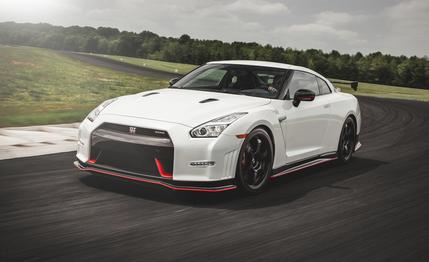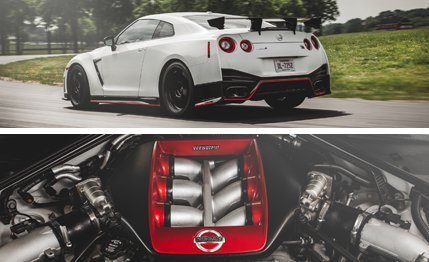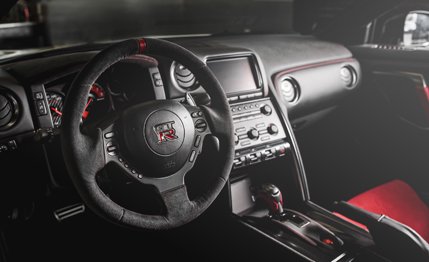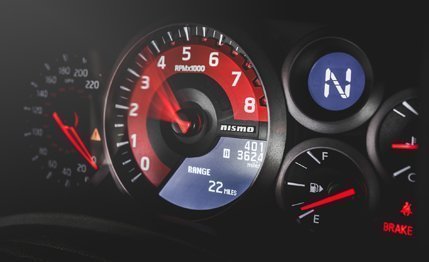 Instrumented Test
Instrumented Test
The 2015 model year marks the seventh for the GT-R, and nearly every turn of the calendar has come with incremental updates from Nissan, stretching the envelope of a car we initially called “big, heavy, and incredible.”
The portfolio grows this year to include a NISMO—Nissan Motorsports—model, and all three of our initial adjectives still ring true. NISMOizing the GT-R makes it a little bigger, stretching the car’s length by 0.5 inch with new bodywork. This includes an integrated splitter and a raised rear wing that, according to Nissan, increase downforce at 186 mph by 220 pounds without affecting the car’s 0.26 drag coefficient.

At 3883 pounds, the NISMO is still a heavy beast and only a scant two pounds lighter than a 2014 GT-R Track Edition. With engine modifications—including larger turbos lifted from Nissan’s FIA GT3 racers, remapped timing, and revised breathing—the 3.8-liter V-6 produces an additional 55 horsepower and 18 pound-feet of torque, for 600 and 481, respectively. Reportedly, Nissan could have cranked it up even further, but resisted the urge for the sake of transmission longevity, which is a touchy subject after early R35 models Cuisinarted their transaxles.
A quarter-mile run doesn’t reveal much difference from the ’14 Track model, with the NISMO breaking the tape in 11.2 seconds at 125 mph. That’s the same time and just one mph swifter than the ’14. In fact, the two track sheets look eerily similar. Both cars register 1.02 g’s on the skidpad, stop from 70 mph in 145 feet, and sprint to a mile-per-minute in 2.9 seconds. Maybe the tires and drivetrain are just about maxed out in the launch department. The NISMO’s extra power is apparent mainly in its run to 130 mph, which is 0.3 second quicker than the Track model’s time.
 Nissan keeps milking its speed cow: The aging GT-R offers up new delights in NISMO guise but the same old arcade-console cabin.
Nissan keeps milking its speed cow: The aging GT-R offers up new delights in NISMO guise but the same old arcade-console cabin.
Adjustable Bilstein dampers, revised springs, and a hollow anti-roll bar at the rear crank up the GT-R’s stiffness. This is no commuter; when it comes to ride quality, think Porsche 911 GT3 RS or a chunk of granite. There are three settings for the dampers, but even in the laziest mode the chassis feels stiffer than a regular GT-R’s.
If there were a prize for most alphanumeric suffixes, the NISMO’s Dunlop SP Sport Maxx GT 600 DSST CTT tires would clinch it. Developed specifically for the NISMO GT-R, Nissan claims the tires are stickier than last year’s rubber. After driving the car on a track and into a paradox with our dusty skidpad readings, we believe that claim.

Understeer is the NISMO’s yeti: Hunt for it all you want, you’ll never find it. The NISMO cuts into a corner with the force of a car intended only for closed courses and pro drivers. Find the apex, mash the gas, and keep it pointed on the road. It’ll do it time and time again, without protest.
The NISMO costs a whopping $48,220 more than a base GT-R, for performance that isn’t apparent on paper. If you’re able to fully appreciate its capabilities on the track, however, you’ll exit saying “incredible, incredible,” which is twice as many times as we said it years ago. And if it isn’t blade-sharp enough for you, a NISMO track model is coming soon. Rumor has it a hybrid powertrain may also slot into the GT-R. Then, Dunlop may finally have a rival for the insufferably long suffix award.